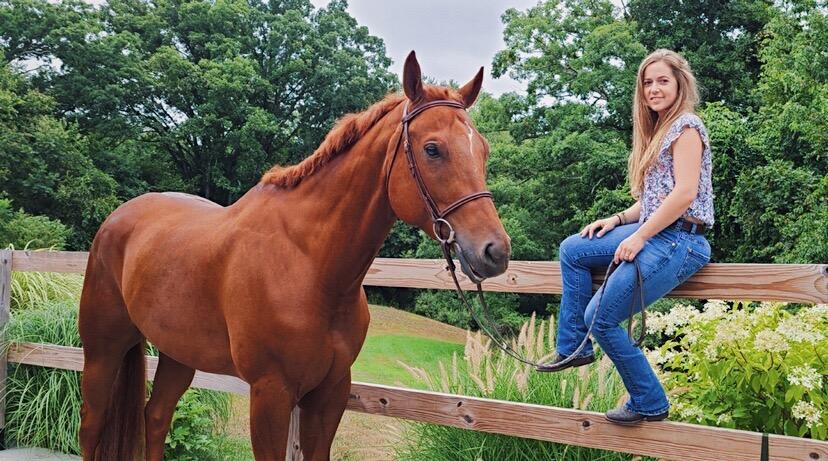-
About
- Leadership & Faculty
- News & Events
-
Academics
- Graduate
- Advanced Clinical Training
- Continuing Education
- Academic Departments
- Academic Offices
- Simulation Experiences
-
Student Life
- Offices
-
Research
-
Hospitals & Clinics
- Emergency Care
- Hospital Services
-
Community Outreach
- Volunteer
All Hands on Deck
A full collaboration between Travis’s owner, primary care veterinarian, and Tufts Equine Center ends in a successful outcome

Rachel Perkins purchased Travis, a solid Appaloosa, as a yearling and spent the next three years carefully training the large, sorrel gelding herself. With good potential as an all-around horse, Perkins competed Travis in hunter-under-saddle, showmanship at halter, hunter-in-hand, and equitation.
But in December 2019, when the pair was training for the upcoming spring season, Travis began having strange symptoms.
Perkins at first thought he may have choke—an equine condition in which food or another obstruction blocks the esophagus—but there was no telltale discharge from the mouth. By the following day, Travis was sticking out his tongue and moving his mouth less, and he had developed a red eye. “My heart was in my throat,” she said. “I had no idea what it could possibly be.”
Perkins called her primary care veterinarian, Julia Wilkinson, V10, of Tufts Veterinary Field Service, who immediately saw that Travis was suffering from partial facial paralysis. Wilkinson did an upper airway endoscopy and scope of the horse’s guttural pouches and found thickening in the temporohyoid bone.
She diagnosed Travis with temporohyoid osteoarthropathy (THO), a condition of the joint where the tongue bones attach to the head. Wilkinson also found that Travis had developed a corneal ulcer in his right eye because he had become unable to blink. Time was of the essence—as the facial paralysis continued to progress—so Wilkinson tapped her colleagues at Tufts Equine Center for help.
Teamwork and communication were key in Travis’s case. “They were very informative about what the surgery would entail and what recovery would be like,” said Perkins. “There were risks but I felt that, at such a young age, Travis still had a lot to offer and we weren’t done with our story.”
José M. García-López—an orthopedics expert board-certified in surgery and sports medicine and rehabilitation who sees a number of THO cases each year—performed the initial surgery, a ceratohyoidectomy. “The best way to deal with THO is to stop the movement of the affected joint,” García-López explained. “If there’s no movement, there’s no pain; if there’s no tugging, there’s no inflammation.”
Treatment for Travis’s corneal ulcer began while he was anesthetized for surgery, but he needed further care from veterinary ophthalmologist Stephanie Pumphrey, V08, when he developed a secondary infection. “We were concerned that he could even lose his eye,” she said.
Pumphrey performed an additional standing surgery to remove infected tissue in the cornea. Then, to help Travis regain his ability to blink by stimulating the affected facial nerves, Kirstin Bubeck of the Sports Medicine and Surgery Service performed several sessions of acupuncture. “It attacks things from a different angle,” said Bubeck.
“It took a little while, but Travis had a really good outcome,” said Pumphrey. “Tufts Equine Center has a lot of options and a good team to give a horse what it needs, and that makes us a unique place.”
“It was all hands-on deck, and the communication worked seamlessly,” added Wilkinson.
Perkins didn’t know whether the pair would show again, or whether Travis would even have two eyes. But, in July of 2020, she and Travis not only competed together again, but also won Reserve High Point Champion in their division.
“We ended up building such a strong relationship through all this,” Perkins said. “When we started riding again, he felt like a completely different horse. He felt better. So, I definitely think, as crazy as it sounds, it played a positive role in his training.”